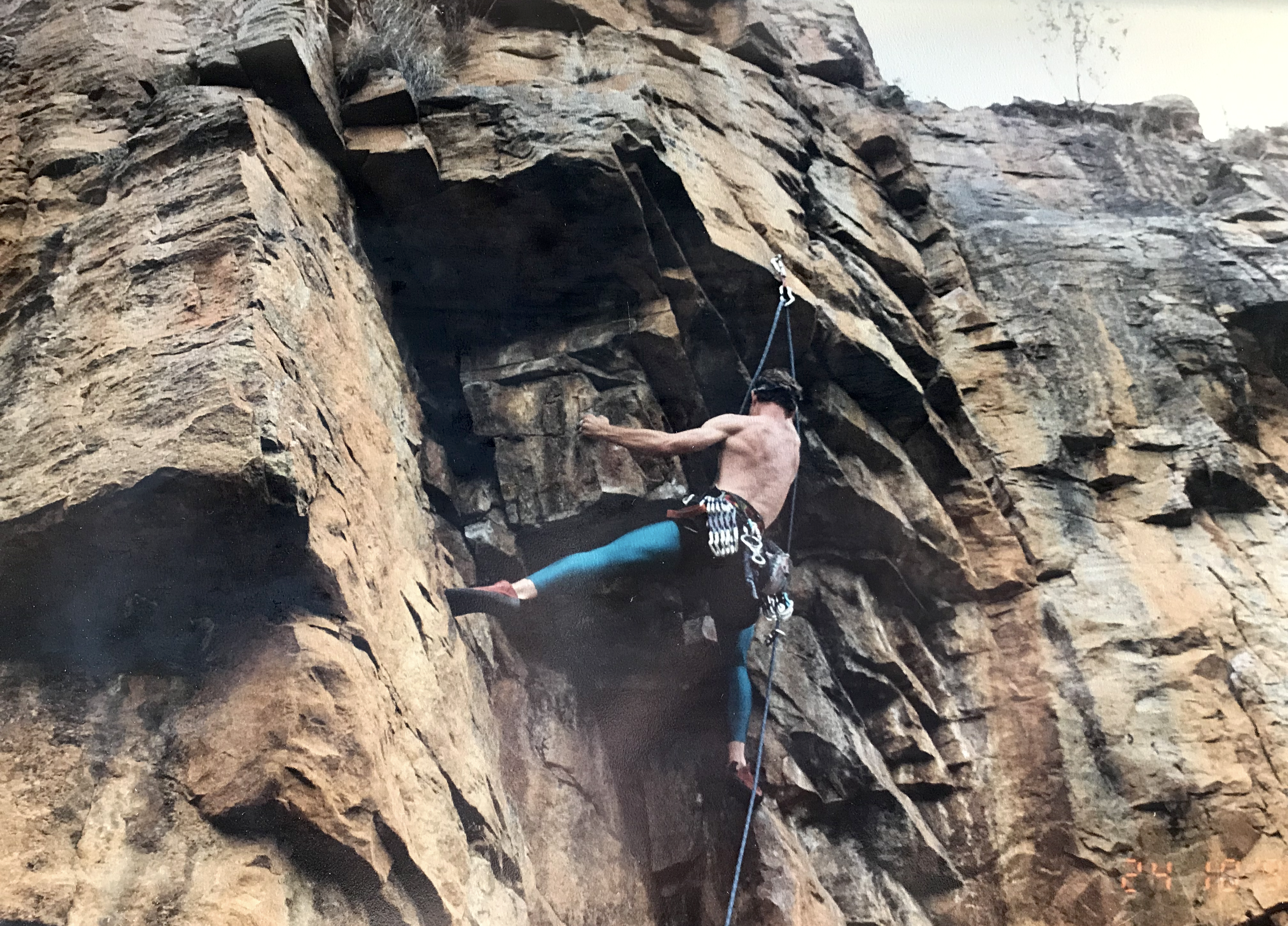ESSENTIAL SKILLS
The complexities of communication

Relationships rely on communication for success. Relationships inevitably experience varying degrees of stress over time and this requires negotiation and conflict resolution skills, both of which rely heavily on communication. So, in order to establish and maintain healthy relationships let’s have a closer look at the art and science of communication.
As far back as I can remember, all the education and training I have had on communication has emphasised that communication is a two-way process. It seemed trite at the time however, it was only when I started rock climbing, where the stakes of misunderstandings are much higher, that I fully appreciated the importance of the two-way nature of communiRelationships cation.
When rock climbing the term used for keeping someone safely tied to the rope is called belaying. There is a climber, who climbs on the free end of the rope and places safety gear in the rock face through which the rope is threaded and the person belaying at a safe anchor point lets the rope out slowly as the leader climbs. In the event of a fall, the belayer locks the rope off on a variable friction belay device and arrests the fall. As the climber climbs they will ask for ‘slack’ or a ‘tight rope’ depending on their needs during the climb. The most safety-critical part of this process is the point at which there is a change in the roles as the climber establishes a new anchor or belay station, and declares that they are safe and that the belayer can take the climber off belay. The person at the top then places the person at the bottom on belay and this enables the person at the bottom to remove all the anchor points and start climbing. The only way that this pair can know whether it is safe to remove anchors and start climbing is with a two-way confirmation calling convention. This becomes critically important when the climbing distances get longer and the conditions are poor due to wind noise or other environmental factors that make it more difficult to hear each other properly. This reciprocal calling system is one of the essential elements of the safety system that helps to significantly reduce the risks associated with rock climbing.

Establishing a culture of meta-communication
The next challenge is instilling a culture of communication in which you set aside time to discuss how you do things. How do we negotiate? How do we resolve conflict? How do we have difficult or vulnerable conversations? Agreeing on how you do things is different from actually doing them. Most people engage in the “doing things” part of a relationship and fail to have a mechanism in place to clarify how to do things. If you have some sort of framework in place that clarifies how you do things then you’ll be able to make improvements in how things are done. So, once you have a general agreement on how to negotiate then you can make improvements that could lead to better outcomes during the next negotiation. The same applies to how you resolve conflict. Conflict is more challenging and is probably best addressed retrospectively if you can avoid the temptation of reopening the specific argument that required resolution the last time around.
Clarification of communication intent
One of the meta-communication techniques that many people regularly blunder through is misunderstanding the intention of the communication and what type of response the person sharing information wants from the receiver of that information. Consider the communication feedback loop in which the sender shares information with the receiver and the receiver provides feedback to the sender. Humans have a predisposition to want to help each other and when sharing information about something that is a problem or a struggle it is natural for the receiver to want to help solve that problem. However, sometimes the sender of that information is just looking for understanding and empathy, rather than actively seeking problem solving. So sometimes it’s worth stepping back and examining the reasons and intention of the communication. Kathy Labriola is an author and relationship counsellor specialising in polyamorous or ethically non-monogamous relationships and has some training material on youtube discussing the goals of communication. As much as her focus is on romantic relationships the principles are transferable to professional working environments. The scientist in me loves the structure of classification systems and the philosopher in me is delighted to discover that someone else has also been thinking about the problem of how to communicate communication intent as part of the communication process.
One of the meta-communication techniques that many people regularly blunder through is misunderstanding the intention of the communication and what type of response the person sharing information wants from the receiver of that information
The five goals of communication
The five goals of communication are one of or a combination of the following:
- To establish a connection or build rapport
- To impart information or share a story
- To ask for support, acknowledgement or empathy
- To make a decision
- To solve a problem
It’s very easy to misinterpret the intention behind why someone is communicating with you, the classic scenario being when you think someone is asking for help to solve a problem but they just want understanding and compassion for the suffering they are going through.
Lost in translation
The other challenge with communication is the manner in which it is delivered and how this potentially changes the way in which it is understood or translated. There are some clues in the way in which radio communication and other technology-enabled communication processes work. In these cases, the sender shares their information by encoding it (using a radio transmitter) and using a channel of communication (electromagnetic waves through the air) to send the signal to a receiving device (radio receiver) that decodes the message and makes it available to the receiver, who can then provide feedback. The steps are: sender – encoding – channel – decoding – receiver – feedback. If there are any coding or decoding errors then the effectiveness of the communication breaks down. Communication between people is heavily encoded through body language, tone of voice, volume, speed of delivery and other non-verbal factors. One of my favourite experts in communication is Vanessa Van Edwards, who runs a business called the Science of People and who assets that between 60 and 90 per cent of communication is non-verbal in nature.
Communicating within the knowledge pyramid
Some ideas are more complex than others and require some degree of pre-existing knowledge and contextual anchoring. Knowledge and understanding have structure and it is the structure of data and information that gives it meaning. Meaning emerges from association, incremental layering and contextual setting. As much as the content is important, the context is also important because it provides a reference point given that everything is relative. If someone else doesn’t share the same structural frameworks that you have when you are communicating then there is a good chance that they are not going to understand you. In his book on the Art of Explanation (link on my website) Lee LeFever uses the idea that an alphabet can be used to describe the scale of detail and complexity in a communication message. Those with a superficial understanding of a topic would require an explanation that starts at the beginning of the alphabet representing basic concepts and ideas as an introduction. Those with a more detailed understanding and familiarity with the topic can get into a lot more complicated detail and use communication strategies that are represented towards the back end of the alphabet. This is an elegant introduction to the idea and uses a one-dimensional scale to describe the problem. A more versatile representation is the information pyramid, sometimes referede to as the DIKW pyramid based on the acronym of the components making up the pyramid.

for this image
The higher you progress up the pyramid the more complex the interconnecting network structure becomes and the more nuanced the contextual framework referencing becomes. All of this makes communication more challenging the higher up the pyramid you are attempting to communicate. When attempting to communicate with someone else it’s important to establish their level of knowledge and understanding so that you can select an effective communication strategy. Every time you communicate you are making subconscious decisions about the type of communication strategy you are choosing to use. The trap here is relying on default communication strategies that you are most familiar with, not considering what the limitations are and how you could adapt them to be more effective.
“There is an art and science to everything, and communication is no exception” – Brett Dawson

Conclusion
Communication is a two-way process. However, communication can be improved significantly by paying attention to meta-communication, which is best achieved by instilling a culture of communication in which you set aside time to discuss how you communicate. How do you negotiate? How do you resolve conflict? How do you have difficult or vulnerable conversations?
Avoid communication misunderstandings by clarifying what the intentions and goals of the communication are. There are five goals of communication, which are:
1. To establish a connection or build rapport
2. To impart information or share a story
3. To ask for support, acknowledgement or empathy
4. To make a decision
5. To solve a problem
Remember the manner in which communication is delivered has a profound impact on how the message is understood or translated. Communication between people is heavily encoded through body language, tone of voice, volume, speed of delivery and other non-verbal factors. Remember that between 60 and 90 per cent of all communication is non-verbal in nature.
Also, remember that some ideas are more complex than others and are more difficult to communicate. Think about how much pre-existing knowledge and contextual understanding the person you are talking to needs to have to be able to understand your message.
Also, remember that every time you communicate you are making subconscious decisions about the type of communication strategy you are choosing to use. Don’t fall into the trap of relying on default communication strategies that you are most familiar with. Every communication strategy has limitations, so give some thought to how you could adapt your strategy to be more effective.



